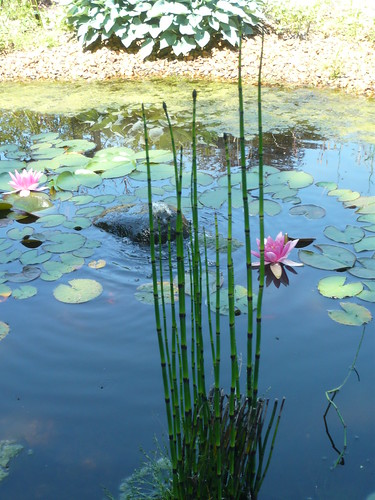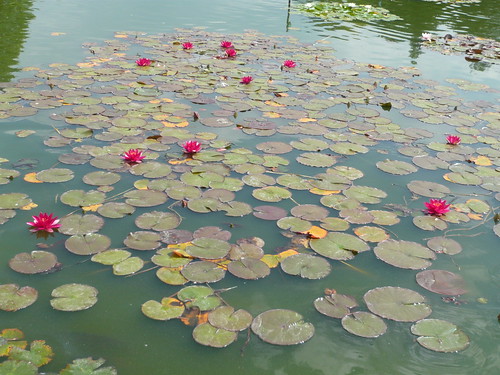Pond Plants and Pond Care
A garden pond can become a miniature nature reserve. Wildlife benefits from the watery environment as do the plants selected below.
Pond Zones
1. The Pond side or Bog area are on the edge of the pond and get their damp soil from the pond.
2. & 3. Zones are in the shallows around the edge of the pond. They are usually created on shelves near the edge and help amphibians escape the water and are useful for marginal plants.
4. The deeper part of the pond down to the bottom. Containers raised on bricks can help vary the depth of the pond to suit particular plants.
5. This zone is a floating area for plants that do not need to put down roots. This zone is used by oxygenators.
Selection Of Plants
- Water lilies flower in strong colours between May and September. Zone 4 planting in sunken baskets full of loam. Leaves shade the water which is then loved by fish.
- Marginal plants like Saururus cernuus (Lizard’s Tail), Oenanthe Flamingo (grown for it’s leaves) and Iris pseudocarpus are zone 2 plants.
- Pond side I love to see Lobelia Queen Victoria or Iris ensata with some golden rushes Acorus ogon.
- Native plants for the edges include Water Mint, Creeping Jenny, Purple Loosestrife or Marsh Marigolds. They give a natural feel to a large pond area.
Read about Water Lilies at Burnby Hall
Dwarf and Pygmy Water Lilies
Top ten flowering water plants on gardeners tips
Pond Care
- Improve the oxygen levels in the water by circulating it with a pump to benefit both amphibians and fish, particular in deeper ponds where oxygen does not diffuse readily through the water.
- Ensure plenty of light gets to the pond by pruning back overhanging branches and brushing off snow. This will allow submerged plants and algae to continue to photosynthesize and replenish oxygen levels in the water.
- Consider adding more oxygenating plants in the spring if there aren’t many.
- Mid-spring through to early summer is the best time to buy pond plants as the water is warming up.
- Keep around 50 percent of the surface free of vegetation by thinning out plants occasionally during the summer.
- Deep water aquatics with floating leaves, such as water lilies, benefit from regular dividing and re-potting, carried out in spring. Place containers on raised bricks lowered in stages as the plants grow, so the leaves can always reach the surface until the final depth is reached when the plant is mature.
- If not being potted on, water lilies benefit from a supplementary feed in the spring with a specialist aquatic plant food to encourage better flowering.
- Snip off any tatty leaves, along with any fading flowers in summer. Remove dead leaves and debris from plants early in the autumn to avoid decomposing vegetation building up in the pond.
- Thin out excessive growth of underwater oxygenating plants. Four to five bunches (each containing three to four stems) should be sufficient for each square metre or yard of pond surface area.
Read this full article on RHS Pond Care
For something a bit different from gardening look at Monet’s paintings or consider plants in a fish tank
| Information Sites | |
| James’ planted tank website www.theplantedtank.co.uk A very popular article site The brilliant PFK website Tropical main site. Very useful plant resource site speaks for itself really ADA Thailand Bulb comparisons. Very Informative |
See our report on ‘Organic pond habitats for green gardeners’.



One thought on “Pond Plants and Pond Care”
Comments are closed.